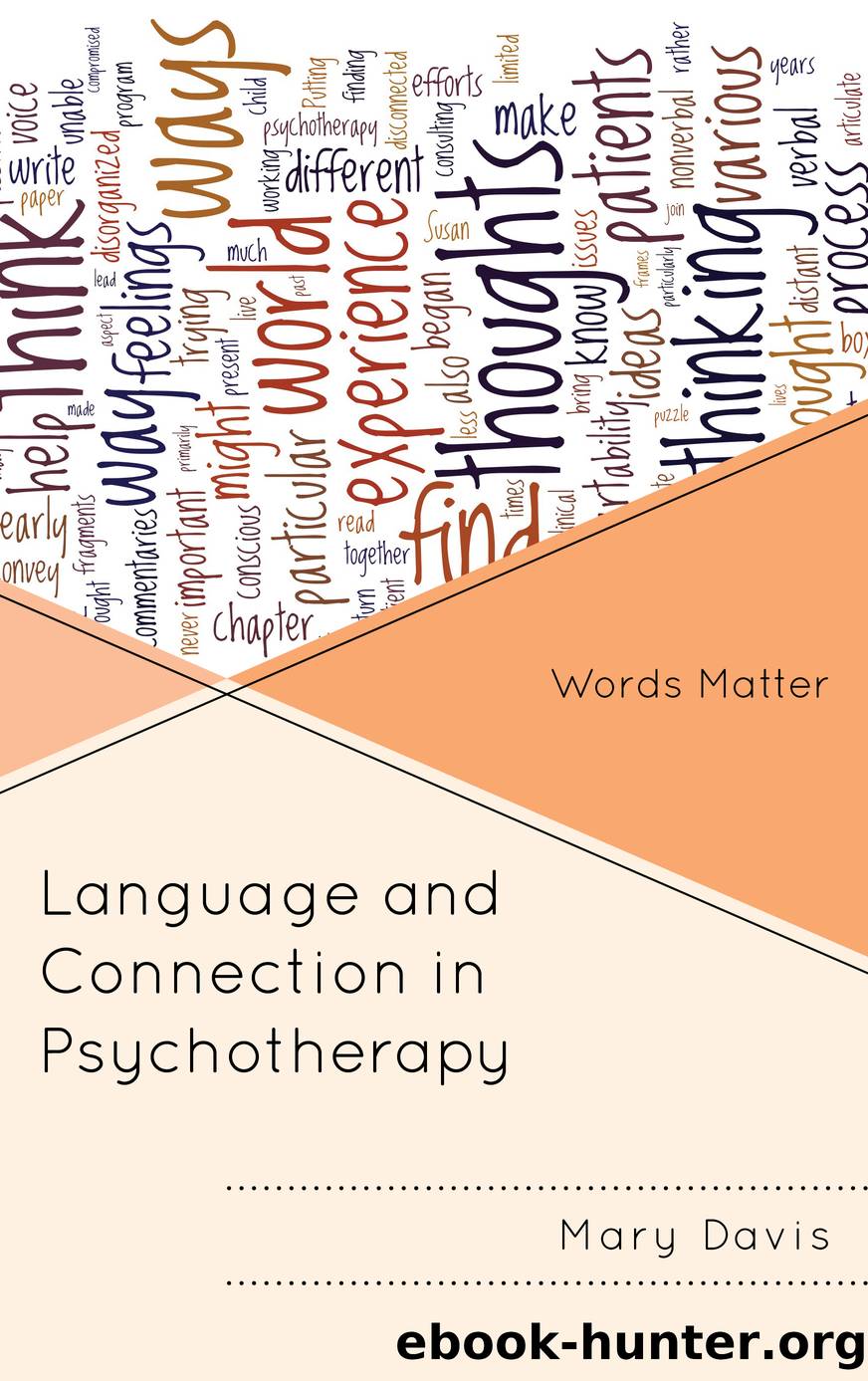Language and Connection in Psychotherapy by Davis Mary E.;

Author:Davis, Mary E.;
Language: eng
Format: epub
Tags: undefined
Publisher: Rowman & Littlefield Publishers, Incorporated
Published: 2012-08-15T00:00:00+00:00
Interestingly, âweâ and âs/heâ occur at the same time, both slightly later than âyou.â This reflects the childâs ability to recognize that âyouâ and âIâ each have separate relationships to âher,â which is different from the simple recognition that âyouâ and âIâ exist. âWeâ asserts the belonging-together of âyouâ and âI,â and âs/heâ asserts there is a third person outside that belongingness. âS/heâ is outside âIâ as well as outside âyou,â and the world of people is becoming complicated. This recognition of âs/heâ tends to occur around thirty to thirty-four months and is the first evidence of an emerging recognition that there can be relationships with two other people, with âIâ competing with âyouâ for attention from âhim.â The ability to resolve this relational conflict and to be comfortable in triadic relationships, to share important lives with others in their lives, is a significant interpersonal achievement, which allows living in groups.
The need for plural and singular pronouns strengthens the recognition of separateness from others, as well as the possibility of âmeâ and âyouâ coming together as âus.â The wish for âusâ to prevail over âyou twoâ in the triadic competition gives special impetus to the meaning of âusâ for the child. Pronouns also reflect the childâs recognition of people outside the dyad and outside the family circle, as he learns âthem.â When these terms are added to the developing vocabulary of the child, his internal representations of the world and of relationships are reorganized. We begin to expect more emphasis on verbal âthinking aboutâ and less on action as the way to consider what is outside oneself and how to deal with the world. With verbal skills, early secondary process (logic, and decisions that are less emotionally driven) grows stronger, offering even more ways of coping with relationships and with the world outside.
The reorganization of the babyâs representation of the world and of relationships with others also includes what Fonagy has called âmentalizationâ (Fonagy et al., 2005), the ability to understand and consider the point of view of the other in an interaction. Recognizing that âs/heâ is both not-me and not-you implies recognizing that your view of her may be different from my view of her. In addition, conversations with others make it clear that others have different knowledge and beliefs than the child does and he learns to take those differences into account in his communication. When I was a young child, speaking Spanish to our familyâs Hispanic housekeeper, I knew that I needed to speak English to my parents, but that Spanish was acceptable with Hilda. I did not realize that they were two separate languages, but I certainly knew who would understand which words best.
At around fifteen months, the baby can stop his own actions with his own words, saying âno, no,â even though he likely still requires the presence of an adult to reinforce the no. He is beginning to develop the beginnings of a superego, a conscience to tell him that a particular behavior is bad or good.
Download
This site does not store any files on its server. We only index and link to content provided by other sites. Please contact the content providers to delete copyright contents if any and email us, we'll remove relevant links or contents immediately.
The remains of the day by Kazuo Ishiguro(8379)
Tools of Titans by Timothy Ferriss(7807)
Giovanni's Room by James Baldwin(6805)
The Black Swan by Nassim Nicholas Taleb(6761)
Inner Engineering: A Yogi's Guide to Joy by Sadhguru(6439)
The Way of Zen by Alan W. Watts(6288)
Asking the Right Questions: A Guide to Critical Thinking by M. Neil Browne & Stuart M. Keeley(5355)
The Power of Now: A Guide to Spiritual Enlightenment by Eckhart Tolle(5329)
The Six Wives Of Henry VIII (WOMEN IN HISTORY) by Fraser Antonia(5234)
Astrophysics for People in a Hurry by Neil DeGrasse Tyson(4998)
12 Rules for Life by Jordan B. Peterson(4160)
Housekeeping by Marilynne Robinson(4059)
The Ethical Slut by Janet W. Hardy(4036)
Skin in the Game by Nassim Nicholas Taleb(3965)
Double Down (Diary of a Wimpy Kid Book 11) by Jeff Kinney(3922)
Ikigai by Héctor García & Francesc Miralles(3889)
The Art of Happiness by The Dalai Lama(3844)
Skin in the Game: Hidden Asymmetries in Daily Life by Nassim Nicholas Taleb(3720)
Walking by Henry David Thoreau(3681)
